The All-Party Parliamentary Group for Engineering
1 March 2020
Discussion over Zoom
Chair – Professor the Lord Broers
Speakers:
• Paul Stein – Chief Technology Officer, Rolls Royce
• Professor Rob Miller – Chair in Aerothermal Technology and Whittle Lab Director, University of Cambridge
Lord Broers began the meeting by thanking everyone for attending and introduced the first of the distinguished speakers, Paul Stein.
Paul Stein – Rolls Royce
Paul Stein is the Chief Technology Officer at Rolls Royce and is responsible for Rolls Royce’s technology investment, ensuring close alignment with business strategy. His previous roles at Rolls Royce include Chief Scientific Officer, a role he had held between 2010 and 2016, and Director of Research and Technology from 2016 – 2019. He is also on the board of Energy Technologies Institute LLP and received an honourary degree from the University of Derby in 2017.
Addressing the virtual meeting, Paul highlighted the need to get to net zero by 2050 to limit the impacts of climate change. One of the key ways to achieve this is to stop using fossil-based jet fuel, as aviation accounts for 2.6% of global emissions, and 7% of globally used crude oil is used as jet fuel.
Paul then discussed some of the initiatives that are being explored by the industry to reduce emissions in line with the 2050 target. Citing that 70% of fuel is used for trips over 1500km, the industry is particularly excited about sustainable aviation fuel’s (SAFs). Amongst these are synthetic hydrocarbon that originate from atmospheric forces rather than fossil fuels. Furthermore, efuels synthesise fuel into aviation fuel, and this process is carbon neutral.
SAFs and hydrogen are both net zero and have the same atmospheric impact. It is also important to consider fuel economics and efficiency. Improving efficiency lowers overall consumption. Finding solutions in a relatively short period of time is another challenge to overcome; technology that will not be completed within 20 or 30 years will not help reach net zero by 2050. Quick engineering maturity is needed to achieve this goal.
Recent tests on electric aircraft have highlighted the potential of this technology but also some of its limitations. Current technology is limited to 200 miles and is able to carry 19 passengers. One of the key issues with this technology is battery size and the amount of electricity that can be stored within it. Another option to reach net zero is the advancement in hydrogen technology. Hydrogen can be compressed into a tank and through the use of a fuel cell can be turned into fuel.
Paul ended his remarks by saying that he believes aviation can get to net zero by 2050, although it will require major changes to reach that goal. This will be driven by major changes to larger aircraft consuming SAFs rather than fossil fuels. Furthermore, for short range flights, airplanes can use a mix of hybrid, hydrogen and electric power.
Lord Broers then welcomed the second distinguished speaker, Professor Rob Miller.
Professor Rob Miller – Cambridge University
Professor Rob Miller is Chair in Aerothermal Technology, Director of the Whittle Laboratory and Director of the Rolls-Royce Whittle University Technology Centre at the University of Cambridge. In 2013 he set up and led the UK Engineering and Physical Sciences Research Council Centre of Doctoral Training in Gas Turbine Aerodynamics, a partnership between Cambridge, Oxford, and Loughborough Universities, aimed at training the next generation of leaders in the aerospace and power generation sectors. He is a member of the UK Department for Transport Science Advisory Council. His research focuses on the decarbonisation of the aerospace and power generation sectors. His honours include the Institution of Mechanical Engineers Thomas Hawksley Gold Medal (2010) and the American Institute of Aeronautics and Astronautics Air Breathing Propulsion Award (2008). He has won the American Society of Mechanical Engineers Best Paper Award eight times and their highest honour in the field, The Gas Turbine Award, four times.
Professor Miller opened his remarks stating that one return flight from London to New York produces more Carbon Dioxide (986kg) than individuals in developing countries produce in a year. This shows the scale of emissions produced by the aviation industry. He said that the good news was that the decarbonisation of aviation is possible. However, the size of the challenge is immense.
He then turned to possible paths to decarbonising aviation. The first Professor Miller highlighted was battery electric flight . If powered by renewable electricity, this removes from the process both the CO2 and non-CO2 bi product of aviation. The problem with battery electric is the weight of the battery limiting potential range to about 250 miles.
Another option being explored is the use of SAFs. This would use renewable electricity to electrolyse water to produce hydrogen and oxygen. Carbon is then either pulled directly from the air or is sourced from sustainable biomass and then combined with the hydrogen using the Fischer Tropsch process to create a switch-in fuel. Using this method, you don’t have to change the infrastructure that currently exists within the aviation industry. One of the principal issues with SAFs is the sheer quantity that needs to be produced. To give an idea of the scale he said that if all of the renewable energy generated by wind in the UK last year was used it would be enough to create 1/6 of the air fuel used by the UK.
A third option on the pathway to decarbonisation is to power aircraft using hydrogen. Airbus have said that they would have a commercially available aircraft by 2035. This method will probably use around a half the renewable electricity of the SAF option. The problem is that this option will require new aircraft and new infrastructure and has a range limited to about 2000 miles.
Professor Miller then discussed the work undertaken at the Whittle Laboratory, the world’s leading jet engine laboratory. It works with and its success is linked to partnerships with Rolls-Royce and other companies. They have focused on speeding up the technology development process. Traditionally the aviation sector has taken 6-10 years to develop a single new technology. The Whittle Laboratories aim has been to reduce this by an order of magnitude. Drawing on inspiration from Formula 1, a rapid technology department has been created. New design systems linked directly to in house manufacturing processes and rapid test facilities. By changing 95% of processes this was shown to reduce the time to design, build and test a new concept from months to days. This has created a new culture as the pace of innovation increases.
Professor Miller concluded his remarks by explaining the need to take a whole systems approach to decarbonisation of the aviation sector. At a recent roundtable set up by The Prince of Wales the Aviation Impact Accelerator had been set up. This was a whole system approach to accelerating the delivery, scale-up and the associated infrastructure, investment, and policy in partnership between Cambridge, the Sustainable Markets Initiative, and the World Economic Forum.
Questions and Answers
Q1 – Laurence Robertson MP
Question – In order to get the technology in time to reach the 2050 target, is it a matter of how quickly technology can be created or is it a funding issue?
Answer – Paul Stein
Aviation is a global industry and therefore whilst the UK can take the lead on solving many of the problems, it needs to be a global response. SAF scale-up is a big problem; crude oil accounts for 4% of global GDP and this needs to be repurposed over the next 20-30 years. There needs to be a redeployment of trillions of dollars of capital globally. Government’s need to co-ordinate on a global level to solve problems.
Answer – Professor Rob Miller
The world needs to adopt a war-like mentality to achieve the necessary pace of technological advancements. During the Cold War, Kelly Johnson developed the A12 in four years to first flight, and this dominated the sky for a generation. However, because the aviation sector has been relatively stable for 40 years it is currently not well placed to achieve this pace of technology development. There also needs to be sophisticated policy to look at the various pathways to decarbonization.
Q2 – Bridget Donaldson
Question – What should policymakers do in the UK to drive both national and international progress?
Answer – Paul Stein
Paul began his answer by stating that in his opinion, there are two ways to help the SAF scale-up. Firstly, through the use of international bodies and summits, like COP26, a pathway to making SAF’s cheaper and more widely available needs to be agreed amongst global players. Secondly, there needs to be an alignment of research pathways over the next 10 years to develop new technologies that make things like SAF’s easier to produce.
Q3 – Finlay Asher
Question – What emissions price (£ per tonne CO2) do the participants expect for aviation emissions in 2030 and 2040?
Answer – Professor Rob Miller
If you look at the way that wind has been unlocked in the North Sea, the government has incentivized companies to move into that area resulting in a price reduction. The government needs to look at policies that incentivize businesses to enter the industry to explore the different pathways to decarbonization. In his personal view, the world will fly less in the future, but the cultural and economic benefits of flying mean high rates will persist. It would also be morally wrong to deny developing countries the right to enjoy its benefits. However, we have to be honest with the public on the importance of delivering this.
Answer – Paul Stein
Policy could come in the form of a requirement to use sustainable fuels rather than a tax on fossil fuels.
Q4 – Edward Talboys
Question – Impurities in airplane fuel can clog up aircraft engines. Will there need to be a loosening of the limits to account for a reduction in the impurities in SAFs?
Answer – Paul Stein
There will be no loosening of the limits, precisely the opposite. Currently, fuel safety needs to be demonstrated to acquire certification. Synthetic fuels have fewer impurities to lubricate the seals. Research has focused on looking at new seals which can cope without the impurities from fossils. Currently, we can fly with a 50% blend of SAFs. The key difference between industry and academia is the pace of change. Industry need to be certain of safety before making any changes.
Answer – Professor Rob Miller
At Cambridge, our team has looked at over 238 possible future fuels. It is important to take a multi-disciplinary approach to understand all aspects of the fuel if they are to be of practical use in flight. Whatever the choice the fuel will require very rigorous testing before use.
Q5 – Amina Abid
Question – Would the efficiency of a car be reduced the larger the size of battery?
Answer – Paul Stein
The bigger a battery gets, the heavier it becomes to a point that it cannot lift itself. Growing battery size is only possible to an upper limit.
Answer – Professor Rob Miller
Whilst battery technology alone would not be sufficient for medium and long range flights, using it in combination with other sustainable fuels could unlock other technology. For example, it could be used in combination with hydrogen fuel cells, which could be used when cruising at high altitude, whilst using the battery to help during take-off and climb.
Q6 – Kenneth Sanders
Question – Does pilotless flying have a role in improving aircraft efficiency?
Answer – Paul Stein
Currently moving from two pilot operations to trialing one pilot in the cockpit, where the AI system can land the plane should the pilot become incapacitated. The next step is to reduce pilot workloads and therefore training, and this is something that the military are particularly interested in. Future generations are likely to trust AI systems more.
Answer – Professor Rob Miller
Black box data is increasingly being looked at to monitor pilots, and this data is showing that variations in pilot behaviour is important. There may be some quick wins that could reduce carbon emissions by changing air traffic control, operations and pilot behaviour.
Q7 – Huw Williams
Question – As Rob and Paul have described, the energy infrastructure to deliver SAF’s sustainably does not currently exist. How do we ensure that the potential negative impact of SAF’s are highlighted and isn’t hidden in carbon trading?
Answer – Paul Stein
Any form of decarbonization needs to look at the whole carbon lifecycle, including relevant supply chains, in any decarbonization model. The UK electricity grid needs to double in size between now and 2050 just to cater for electric vehicles and other forms of sustainable transport, not even taking into account SAF’s production.
Answer – Professor Rob Miller
Any systems models that are produced need to be big enough to solve the real problem. It’s not good enough to replicate a subset of reality; models need to predict in their entirety. For example, you need to look at where your electricity to produce the SAFs is coming from, you need to factor in the journey of a person to the airport, and you need to consider the fuel burn in taxiing the aircraft before take-off.
Professor the Lord Broers closed discussions by thanking our distinguished speakers, excellent guests and event organisers, particularly in these challenging times. It is hoped that events will return to the House of Lords as soon as guidance permits.


